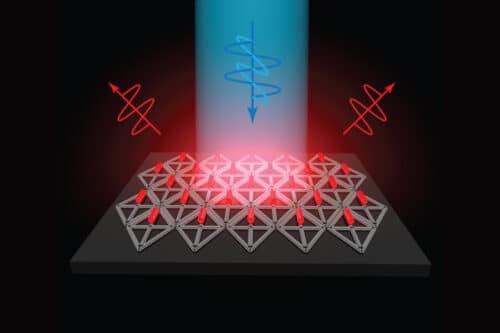MIT engineers have developed a new method to arrange these arrays by anchoring quantum rods to DNA patterns.

Commercially available flat-screen TVs now use quantum dots technology. However, producing arrays of their extended counterparts, quantum rods, for consumer devices has proven more challenging. Quantum rods can regulate light polarisation and colour, making them ideal for 3D imagery in virtual reality gadgets.
Engineers at MIT have developed a new method to accurately arrange quantum rod arrays using DNA scaffolds. By meticulously placing quantum rods onto these DNA structures, the team can manage their orientation, a critical aspect influencing the light’s emitted polarisation. This advancement paves the way for enhancing depth and dimension in virtual environments.
Nanoscale structures
Previous methods, like mechanical rubbing or an electric field, achieved limited success in aligning quantum rods. This was mainly because, for optimal light emission, the rods must maintain a distance of at least 10 nanometers apart to prevent light-emitting suppression from neighbouring rods. To overcome this, the team ingeniously anchored quantum rods to diamond-shaped DNA origami structures, sized appropriately to ensure the desired distance. Once constructed, these DNA structures were affixed to a surface, interlocking seamlessly like puzzle pieces.
Assembling the puzzle
The team has introduced a technique that involved emulsifying DNA with the quantum rods and then swiftly dehydrating the combination. This procedure resulted in the DNA molecules densely coating the rod’s surface. Remarkably, this process is completed in just a few minutes, making it substantially quicker than current methods for attaching DNA to nanoscale particles—a potential game-changer for commercial applications. The DNA strands function similarly to Velcro, enabling the quantum rods to adhere to a DNA origami template. This template creates a slim film that covers a silicate surface, assembled by interlinking adjacent DNA templates using overhanging DNA strands at their boundaries.
Now, the researchers aspire to develop wafer-scale surfaces with engraved patterns. Such advancements could pave the way for scaling their design to device-level configurations of quantum rods, with potential applications extending beyond micro LEDs or augmented and virtual reality.






